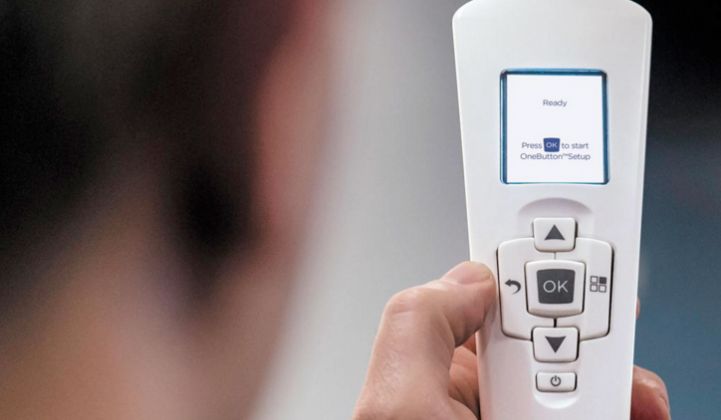Cree, the North Carolina-based producer of LED lighting systems, continues its steady pace of announcements.
After beating analyst expectations for revenue in the fourth quarter of 2013 and becoming a lead business partner in President Obama's new manufacturing hub at North Carolina State University, the company is now moving aggressively into lighting controls for commercial office buildings.
Cree has developed a new wireless platform called SmartCast, which will be embedded into its LED luminaires and will feature occupancy controls and ambient light sensors for dimming. The platform allows each individual luminaire to talk to others and adjust behavior based on changing conditions.
The new system thrusts Cree into the booming $1.7 billion lighting controls market, which is expected to grow threefold by the end of the decade.
The occupancy and ambient light sensing functionality is standard in the industry. But Cree says its system can be installed and configured in a few minutes, with no new wiring and virtually no additional labor cost -- adding a 40 percent cut in energy consumption per year on top of initial savings from LEDs. The system can be installed for roughly 40 cents per square foot.
"There's a lot of extra stuff you have to put in your building with other controls systems," said Tom Hinds, Cree's business development manager, in an interview. "This is a new and different way to do lighting controls."
In a video demonstration, Cree shows installation and configuration of the SmartCast system for a conference room being completed in a couple of minutes.
"We networked six luminaires, and it's done and ready in under two minutes," said Hinds. Of course, the demonstration was filmed in a perfect environment for marketing purposes, more like an as-seen-on-TV commercial than a how-to manual. But Hinds said the video mirrored reality.
"We knew we had to be simple, and not scary to interact with," said Hinds.
The system is new to Cree's business, but it isn't exactly new to the industry.
Acuity Brands (which acquired the lighting firm Adura last January), Daintree Networks, Enlighted and Redwood systems (acquired by CommScope last July) all have similar wireless controls systems designed to cut back on the complexity of installation in commercial office buildings. Each company pitches its product in the same way: the "old" way of installing controls is too complicated, and they have a simpler solution.
Cree previously set up a partnership with the controls company Lutron to develop a more complex platform that hooks up to a building management system. But this new "one-touch" system is proprietary.
Cree is different than these other competitors in that it manufacturers its own LEDs and luminaires. It also has extensive sales channels built into its business, which gives it an advantage over startups.
"We’re out to sell our luminaires," said Hinds. Controls are the next natural step for the company, as they are for so many others in the industry.
Cree's foremost competitor may be Philips, the world's biggest lighting manufacturer. Last April, Philips unveiled SpaceWise, its own wireless mesh control platform embedded into luminaires, touting the exact same integration benefits.
If Cree has proved anything, however, it's that it can challenge the incumbents in lighting. In just six years, the firm has picked up one-tenth of the worldwide LED market, and it continues to announce major milestones in performance and cost.
Just last week, Cree announced that it had demonstrated a 200 lumen-per-watt luminaire, an efficiency that the Department of Energy projected wouldn't be hit until the end of the decade. The company also became the first to develop a commercial LED with a color rendering index of 93, which comes very close to mimicking the warm white light of an incandescent bulb.
While the vast majority of commercial buildings don't have sophisticated lighting controls, the technology is becoming more attractive as a range of companies roll out offerings to make integration simpler.
Some, like Digital Lumens (which is focused on the industrial market), see controls as a way to offer granular data on how a facility is operating, potentially opening up new opportunities for energy management services. Cree's system is much simpler, and won't offer any deep data monitoring tools or software packages. Instead, the company is focused on the simplest offering possible.
"We knew we had to keep it simple to drive faster adoption," said Hinds.
According to a 2012 survey from the Lighting Controls Association, on average only 30 percent of contractors were installing intelligent controls with lighting retrofits. But with a 12 percent compound annual growth rate expected for the market through 2020 and more companies developing better offerings, the race for dominance in lighting controls is on.



